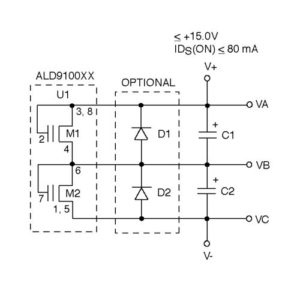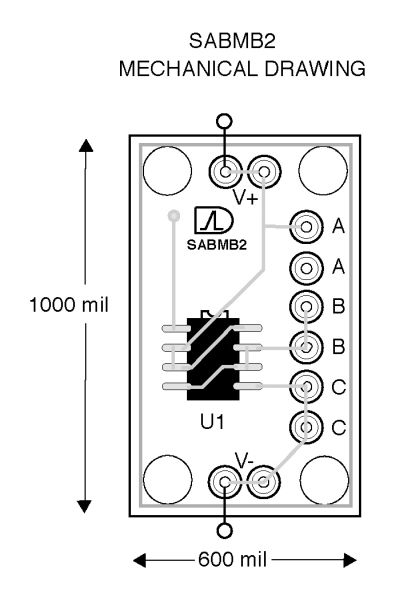Two-Channel printed circuit boards provide production-ready automatic balancing for two-cell supercapacitor low-voltage systems. The SABMB2 offers over-voltage protection and ultra-low power usage for supercapacitors required in industrial controls, remote monitoring, and battery backup applications.
Developed by Advanced Linear Devices Inc., the PCB balances leakage current, manages over-voltage and  dissipates zero power. Each SABMB2 balances two supercapacitors used in a series stack. The board is well suited for both prototyping or production, and it is an easy-to-use out-of-the-box solution, with no additional engineering resources required. The SABMB2 boards are used in robotics, utility boxes, critical data protection and battery backup products.
dissipates zero power. Each SABMB2 balances two supercapacitors used in a series stack. The board is well suited for both prototyping or production, and it is an easy-to-use out-of-the-box solution, with no additional engineering resources required. The SABMB2 boards are used in robotics, utility boxes, critical data protection and battery backup products.
ALD’s SABMB2 two-channel board uses an ALD9100xx dual SAB MOSFET to automatically balance each individual supercapacitor cell in the stack. The board allows system designers and developers to control leakage current and balance voltage in each cell, thus preventing over-voltage damage.
Additionally, the SAB MOSFET’s PCB-balancing technology enables ultra-low power operation. The average added  power dissipation from the SABMB2 is zero, providing an energy efficiency for low-loss energy applications. In many cases, this added power burn is actually negative, meaning power usage due to supercapacitor leakage is lowered when these devices are added for balance. The MOSFETs can save supercapacitor leakage current and associated power dissipation by lowering the operating bias voltage of the leakier of the two supercapacitors.
power dissipation from the SABMB2 is zero, providing an energy efficiency for low-loss energy applications. In many cases, this added power burn is actually negative, meaning power usage due to supercapacitor leakage is lowered when these devices are added for balance. The MOSFETs can save supercapacitor leakage current and associated power dissipation by lowering the operating bias voltage of the leakier of the two supercapacitors.
Said Robert Chao, president and founder of ALD Inc., “The active cell balancing of the SABMB2 is ideally suited for today’s supercapacitors because the impact on power consumption is negligible.”
By offering automatic balancing, each device in the ALD9100XX SAB MOSFET family provides a superior design alternative to most passive or active balancing methods, including operational-amp-based schemes.
The SABMB2 is designed to reduce time-to-market in a small package of just 0.6×1 in. for easy integration that reduces the bill-of-material costs. The board can extend the operational life of the stacked supercapacitor, balancing cells ranging from two in a series, up to dozens, and for cells that range from 0.1 Farad (F) to 3,000 F in 3.3-V, 4.2-V and 5.0-V systems. The boards are designed to be used in universal applications.
The boards are available as blank boards or populated with the ALD9100XX installed at test. The product can be ordered directly from ALD or from online distributors DigiKey and Mouser. Prices start at $4.18 each for boards ordered in volume.
Advanced Linear Devices, Inc., 415 Tasman Dr, Sunnyvale, CA 94089, (408) 747-1155, www.aldinc.com/


Leave a Reply